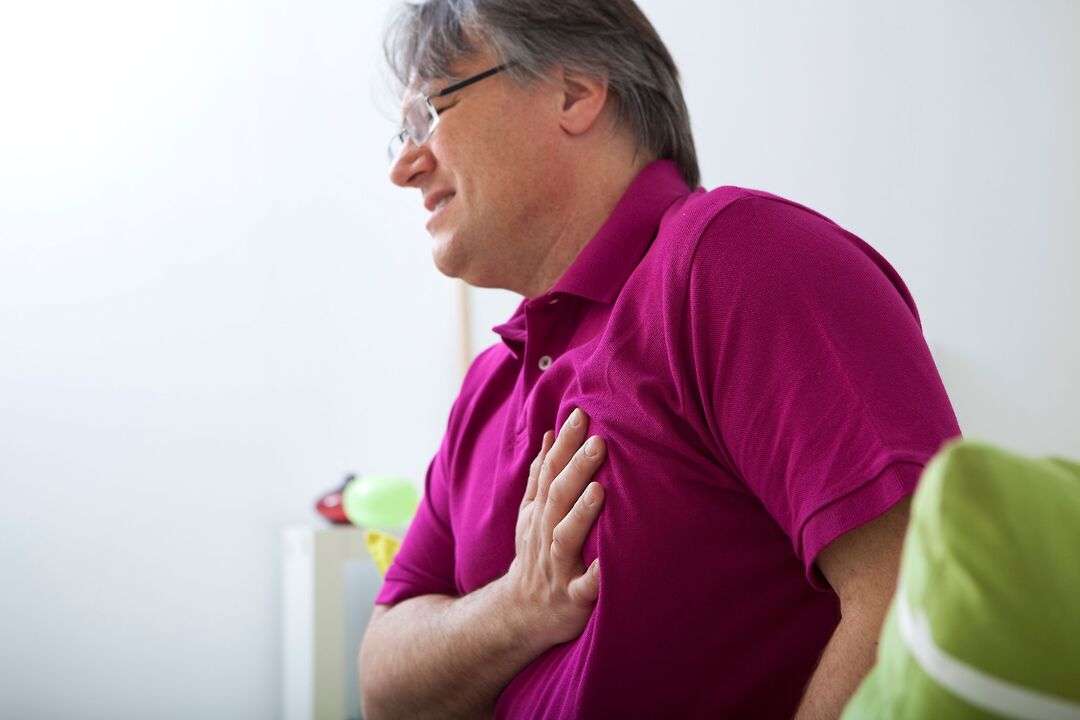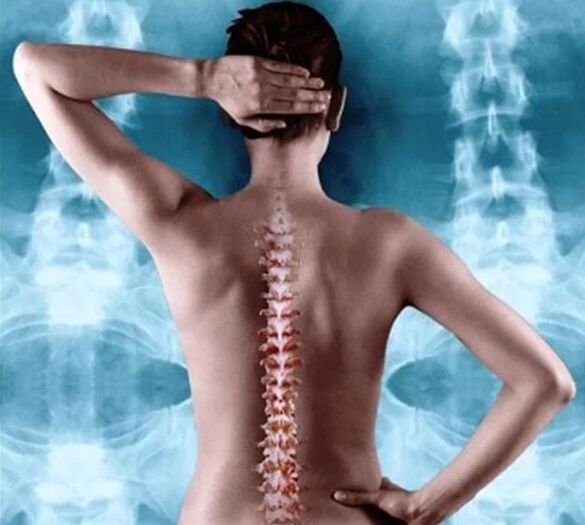
The human spine is one of the most important components of the musculoskeletal system, and disruption of its normal functioning always leads to negative consequences for the whole organism. Thoracic osteochondrosis is a degenerative-inflammatory disease of the spinal discs in the thoracic region. The disease most commonly affects people over the age of 55, but can also occur in any adult. The disease is half as common in men as in women.
In general, the department is the largest of the 12 vertebrae in the middle of the spine, but is less prone to pathology. This is due to less mobility and better protection of the muscle corset. This feature of the structure is a positive factor, but it is difficult to determine in the diagnosis of osteochondrosis of the thoracic region, and it can be confused with other diseases for a long time, especially when there is a temperature.
The International Classification of Diseases has criteria for the 10th revision (ICD-10), so osteochondrosis belongs to the class of dorsopathy (M40-54). There is a separate ICD-10 class for osteochondrosis of the spine - M42 according to ICD-10 and equivalent to deforming dorsopathy. Diagnosis M42 for young people. 0 to ICD-10 code and M42 for osteochondrosis in adults. 1 is installed in accordance with ICD-10 code. M42. 9 ICD-10 code can occur with undiagnosed pathology.
Reasons
Thoracic osteochondrosis is less common than damage to other parts of the spine. Many people do not see a doctor for a long time, thinking that there are other pathologies. According to statistics, this leads to the detection of the most advanced form of the disease.
The disease occurs due to malnutrition and disruption of blood supply to the intervertebral discs. Osteochondrosis can lead to disruption of the normal structure of the vertebrae. The elasticity and cushioning properties of the spine are lost, and all this leads to the destruction of discs, ligaments and other structural components. As a result of such disorders, nerve roots are compressed and unpleasant symptoms appear.
It is almost impossible to find the exact causes of the pathology. There are risk groups and predisposing factors in humans. As for people themselves, this age is over 55, and the presence of female genital and spinal pathologies increases the risk of disease. Abnormalities such as scoliosis and kyphosis over time disrupt the posture and normal organization of the spine. As a result, metabolic processes in the spine are disrupted and chondrosis occurs.

There are factors that directly depend on the person causing the pathology. Let's emphasize the main ones:
- excess body weight;
- abuse of bad habits: alcohol, smoking, fatty foods;
- sedentary lifestyle.
People who spend a lot of time in a sitting position are prone to the disease. This applies to office workers, seamstresses, operators, drivers. A person with a back or spinal injury should be careful in the future. There is a group of people with inherited or acquired diseases who are prone to diseases of the musculoskeletal system. The main conditions are diabetes mellitus, muscle weakness, dysfunction of the glands.
Types and clinical picture
The symptoms of osteochondrosis of the thoracic spine depend on the degree of pathology and the indifference of the process. In general, there are four degrees of the disease.
In the first degree, there is a violation of the elasticity of the intervertebral discs and a decrease in their height. The pain symptoms are not so severe and pass quickly at rest. The pain is mainly felt in the middle of the back and chest. Often the disease becomes passive, and clinical manifestations appear only during exacerbation, quickly stopped and treated. In rare cases, signs of intoxication are observed, sometimes the temperature may rise and weakness may occur. After an acute period, the temperature quickly returns to normal.
The second degree is more dangerous and can cause severe neurological symptoms. With this degree, the height of the spinal discs is constantly reduced, the elasticity is impaired. The fibrous ring of the intervertebral disc may be damaged and a crack may form. This stage is fraught with the danger of the appearance of an intervertebral hernia.
The pain in the chest and back area intensifies and eventually spreads to the adjacent area. Acute pain attacks occur during deep breathing or sudden movements. When nerve endings are damaged, symptoms spread along the ribs. During the exacerbation there is an increase in temperature, general weakness. With this degree of disease, numbness and creeping "goose shoots" at the site of the lesion are combined. If the nerve fibers are damaged, then normal innervation in the upper or lower extremities is disrupted.
Osteochondrosis of the third degree thoracic region is characterized by the onset of intervertebral hernia. There is severe pain that occurs under certain conditions. Often the pain can be exacerbated at night, in a cold for a long time, in one position. Pain along the chest, back, ribs. When in contact with the spinal cord, the following symptoms may occur:
- violation of the innervation of the legs and arms;
- increasing pain at night;
- pain in the esophagus, right hypochondrium, stomach;
- increased body temperature;
- Problems with the normal functioning of the gastrointestinal tract.

In the last, fourth degree, the bone tissue of the spine is destroyed. There is a violation of the mobility of the spine, the damping properties are reduced. To this extent, thoracic osteochondrosis is dangerous with damage to the spinal cord and impaired human function. With exacerbation, the body temperature rises, there is severe pain in the chest, in the middle of the back.
There are two main symptoms in the general clinical picture - dorsalgia and dorsalgia. Dorsago is characterized by sharp pain in the chest. After a person stays in one position for a long time, there is a feeling of fire in the chest. During the attack, it becomes difficult to breathe, and the pain is aggravated by the lateral movements of the body. This situation raises the temperature.
There is a slight pain in the area of the vertebrae damaged by dorsalgia. Pain symptoms increase and last up to three weeks. The pain intensifies after deep breathing or exhalation and with movements. Symptoms worsen at night and are relieved by walking. International Classification of Diseases 10th revision (ICD-10) M54 separately for dorsalgia with chest pain. Assigns code 6.
Diagnosis and treatment
With the right approach, it is not difficult to diagnose thoracic osteochondrosis. The main thing is to make a differential diagnosis of cardiovascular pathology and exclude other diseases. The presence of specific pain, fever and neurological disorders increase the doctor's suspicions.

The main diagnostic method is radiography. To rule out complications, it is necessary to capture not only the image of the damaged branch, but also the adjacent ones. If a complete examination of the spine is not possible and you suspect tissue and vascular damage, computed tomography and magnetic resonance imaging are prescribed.
Thoracic osteochondrosis is often treated conservatively.
The main thing in treatment is complexity and individual approach.
Depending on the degree of pathology, a home treatment regimen or hospitalization is possible. In any case, it is necessary to apply certain principles - this is a gentle load regime that limits weight lifting and exercise, prevents overwork and strictly adheres to the doctor's recommendations.
In the acute phase of the disease, thoracic osteochondrosis requires bed rest when there is pain, fever. In the presence of pain syndrome and fever, NSAIDs, analgesics are prescribed. Maybe a combination of ointment, physiotherapy and massage. This combination will allow you to quickly eliminate the disease and get up.
The basis of treatment of osteochondrosis is a local effect. Manual therapy will allow you to replace the vertebrae, massage, physiotherapy (electrophoresis, ultrasound, magnetotherapy) and reflexology can restore nutrition. It is important for both men and women to engage in therapeutic exercise and adhere to a treatment regimen.
With complications, traction or even surgery can be prescribed. Otherwise, symptomatic therapy is used.























